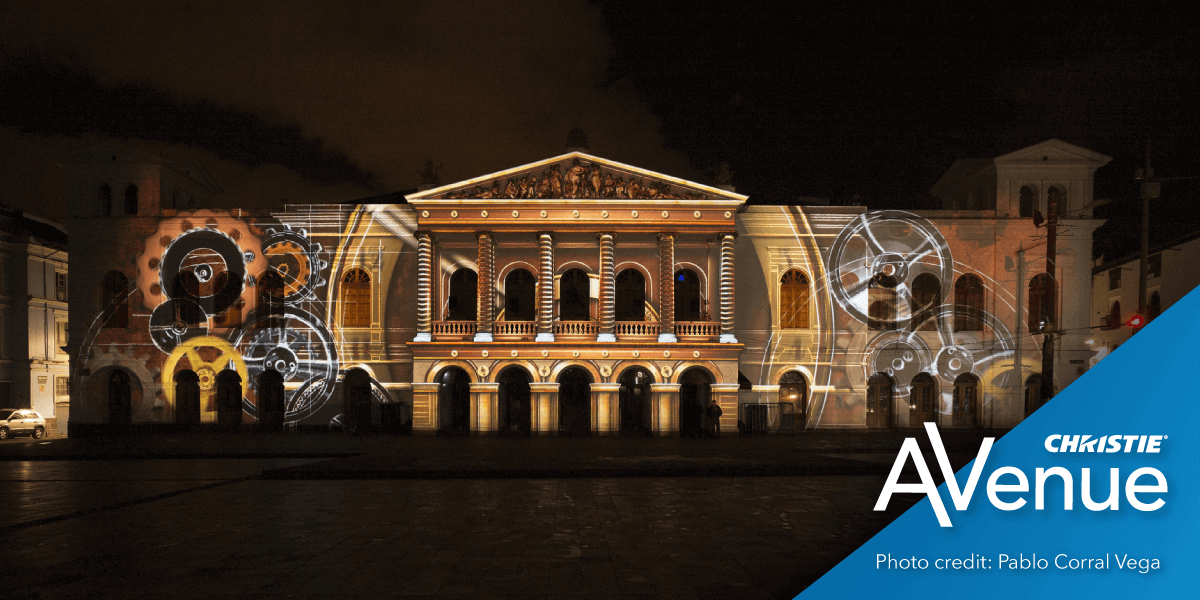To remember who we are. The power of light festivals

When the definitive history of light festivals and projection mapping is written, the Fiesta de la Luz will get a special mention. Not necessarily because of the groundbreaking technology used, but because something extraordinary happened in Quito, a world heritage city high in the Ecuadorian Andes. Its people did not just watch a spectacle, they made it their own.
It was August 8, 2018, the third year of the Fiesta de la Luz in Quito — five days of collective celebration. With two dozen light installations, theatre performers, street musicians and, with all the museums and cultural centers open, the festival had become a tradition. But on that day, it was the catalyst for an unexpected wave of civic unity and pride that took everyone by surprise. And the most surprised of all were the Quiteños themselves, and the role they played in bringing the Fiesta de la Luz to life on the night that more than a million people took to the streets.
But first, a little history. And an introduction.
Quito
Quito has the second-highest location of any capital city in the world and in 1809 was the first city in Ecuador to declare independence from Spain. Like most capital cities, it’s a mix of the astounding and the mundane. A World Cultural Heritage Site as declared by UNESCO it’s simultaneously a place of wealth and a place of poverty, a seat of power and home to the powerless. It’s both an organized society and wonderfully tumultuous at times. And one man responsible for the organization—and some might say the tumult — was Pablo Corral Vega: photographer, lawyer, academic, writer, and at that time, Quito’s secretary of culture.
Pablo was a Nieman Fellow at Harvard when he took classes with Professor John R. Stilgoe, an advocate of conscious walking. This, Pablo says, taught him to appreciate every city as a place of mysteries and rhythms. The story behind an oft-unnoticed doorway, the way the streets filled and emptied, the way the clouds filled the valleys, the significance of every pavement crack and blemish.
A photographer’s eye
To share this magical view of the world, Pablo wanted to create more than just a light festival; he wanted to use his photographer’s eye to reveal the city behind the city and share it with the world. Most importantly, Pablo had also spent time as part of the MIT Media Lab, where he’d seen the transformative characteristics of light. Could light reconnect the Quiteños with their own city’s hidden mysteries and rhythms?
Pablo takes up the story. “I became good friends with the director of the Fête des Lumières in Lyon, the largest light festival in the world. And he said, ‘You need to understand that this is not a light festival; this is a festival of darkness. Dim the city so it becomes mysterious again. Once it’s dark, people live in their city in a different way’.”
Pablo continues, “I knew I had to connect to the symbols, the sounds, and the feelings of the local people and work with local artists. If they don’t have the technical competence, that’s what we’ll give them. We arranged for the top French light artists to come to Ecuador and share their expertise. And that exchange transformed everything.”
Something special is happening
When night fell, Pablo knew something special was happening. The city’s transportation system was busier than ever and more cars were on the toll roads. Most unexpectedly, thousands of unofficial performers, theater groups, and street markets had sprung up. The people of Quito were celebrating Quito. A light festival had given them permission to reclaim the long-forgotten gathering places, this was their city, and they were proud it was theirs.
Christie projection undoubtedly played its part, as had the work of Christie rental and staging partner 3Laser, but they had achieved something that exceeded light alone. The city was reimagined in real-time by its own population. All that was needed was a spark, and the festival was that spark.
It’s one thing to transform a city for one night and another to keep that transformation alive when the light of day breaks and washes the pretty colors away. Just as projection mapping isn’t imposed on the buildings it illuminates, light festivals don’t impose on the cities they celebrate. They work best when their light reveals long-forgotten places and traditions and the extraordinary lives of ordinary people.






